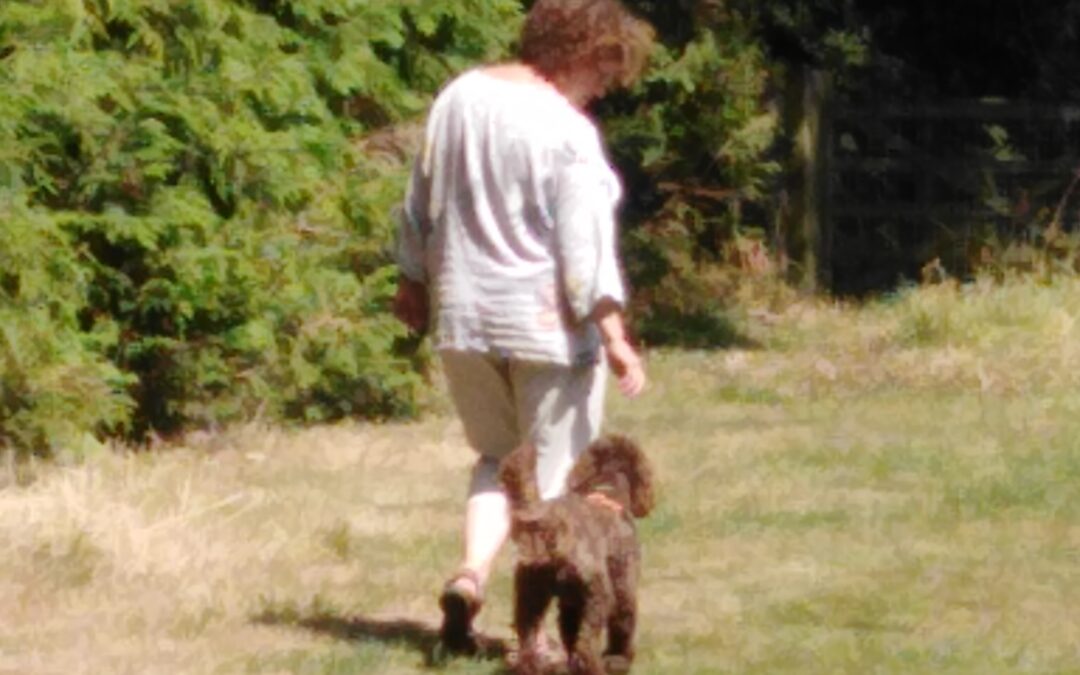Stop the Pull
An introduction to loose lead walking
This month (and into February) on my social media I will be focusing on loose lead walking. Please check me out on twitter, Instagram, YouTube and Facebook – Dog Owner Training School.
This important skill can make all the difference when it comes to walking your dog. A dog that drags you along simply doesn’t make a walk enjoyable.
There are 5 main points I will be focusing on –
– Equipment and how to hold the lead
– Leaving the house
– Teaching your dog to wait
– Sniffing
– Expectations.
A dog who leaves the house like a bullet out of a gun is going to be unable to walk on a loose lead. This excitement starts to build as soon as you put your dog’s harness and lead on. The outside world is a very exciting place for a dog who spends most of his time inside the house. Loose lead walking involves lots of self control for an animal who doesn’t naturally walk at our pace in a straight line. Investing the time to ensure your dog is calm when you leave the house is essential, to ensure they walk on a loose lead, and I will be covering lots of games and training activities to help with this.
‘Wait’, meaning stop is great to give you extra control when walking your dog on a lead. There may be times when the ground is uneven or slippery, or maybe you need to cross over a road, tie your shoelace or check your phone. Other words that I like to teach dogs include ‘steady’ meaning slow down, and ‘lets go’ to speed them up.
“But my dog likes to sniff the whole walk!” That is a very natural and essential behaviour for a dog. It is how they explore the world and find out about who else has passed through before them. Sniffing is a distraction that you can also use as a reward. All the time the lead is loose, you can give them a steady supply of new smells as you walk together. If they try to drag you from one smell to the next, stand still. They can’t continue to get access to new smells unless the lead is loose.
Why does lead work often work in a class situation, but not real life? In a class situation you have your treats to hand, set your dog up to where you want them to be and focus on keeping them there. In real life you leave your house with your dog dragging you along with no clear expectation of how your dog is supposed to behave. Both you and your dog want to get to the field as quickly as possible so you can let them off the lead – your dog wants to run, you want to stop them pulling on the lead and hurting your hand. You may get cross with your dog when they pull on the lead, but you haven’t set them up with clear expectations of how you want them to walk the minute you step out the door.
As you will know, I teach two different types of lead work – training mode and leisure mode. Each have a very clear signal to the dog as to how they are expected to behave. I always jokingly say that if my dog could talk, I would hope he would be able to clearly define the expectations in each lead work mode!
These 5 principals of loose lead walking – equipment, leaving the house, teaching a wait, sniffing and setting expectations all come together in my 21 days to Loose Lead Dreams online course. This course gives you an activity to do each day with your dog as part of their daily walk in the 21 pre-recorded videos. You can work through the videos at your own pace, spending longer than a day on an activity if you need to. You get to keep all the course materials for life.
If you have any questions please don’t hesitate to contact me.
Laura

